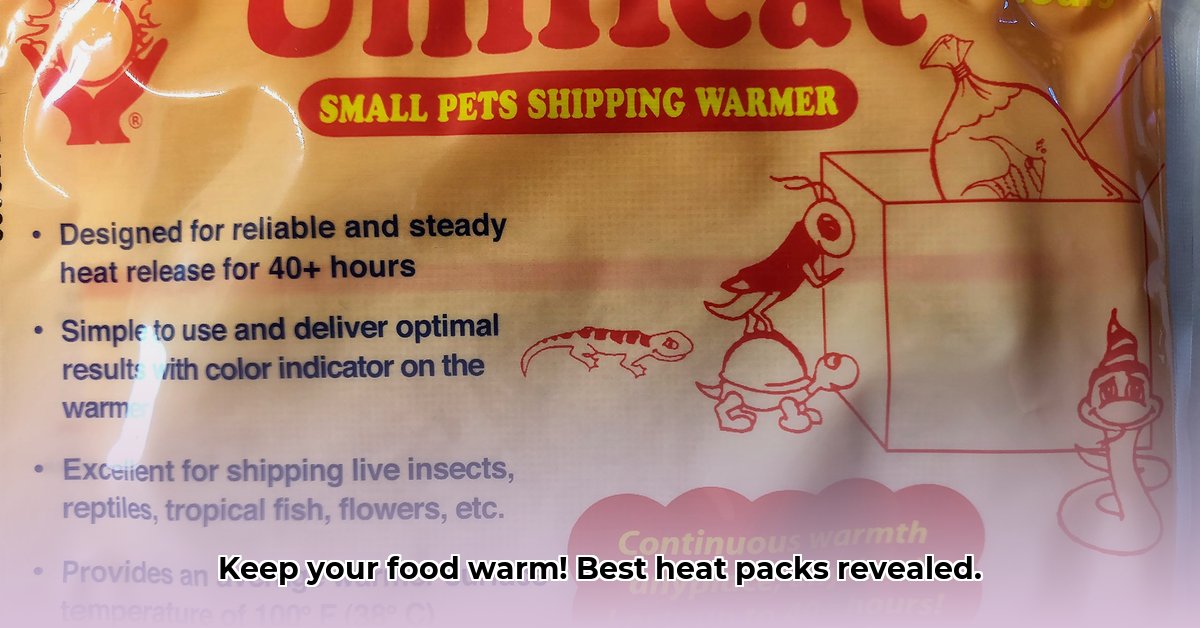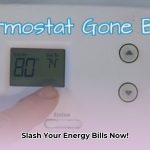Need to keep your food warm on the go? Whether you’re a delivery driver, caterer, outdoor enthusiast, or just someone who enjoys a hot meal away from home, choosing the right heat pack is essential. This article compares different types of food heat packs—including microwaveable gel packs, phase change material (PCM) options, and flameless varieties—to help you find the perfect fit for your specific needs. We’ll consider factors like how long they keep food warm, upfront and long-term costs, environmental impact, safety, ease of use, and portability. Discover the ideal solution with insights into temperature consistency and practical applications.
Heat Packs for Food: Finding the Perfect Fit for Your Needs
Maintaining the right temperature for your food while on the move presents a significant challenge, whether you’re a catering professional, delivery service provider, or an individual seeking a satisfying warm meal. With such a diverse array of heat packs available, selecting the appropriate one can feel daunting. We’ll break down the options and guide you toward the best choice for your circumstances. Master the art of selecting the right heat pack with these insights.
Types of Food Heat Packs: A Detailed Overview
We’ll examine the three main categories of food-warming solutions: microwaveable gel packs, phase-change material (PCM) packs, and flameless heaters. Each offers unique advantages and disadvantages, which we’ll explore in detail.
- Microwaveable Gel Packs: These are the affordable, convenient choice for quick heating. They’re simple to use, requiring just a brief microwave cycle. However, they depend on microwave availability and offer shorter heat retention compared to other options. Consider them a practical, reliable solution for short trips and convenient reheating. They are ideal for packed lunches at work or school.
- Phase-Change Material (PCM) Packs: These packs utilize innovative materials that maintain a consistent temperature for extended durations. While carrying a higher initial cost, their superior longevity and thermal consistency make them a worthwhile investment, particularly for longer transport or for foods requiring precise temperature control, such as temperature-sensitive dishes or catered meals.
- Flameless Heaters: These heaters offer a balance between heat retention and portability, typically relying on a chemical reaction to generate warmth. They eliminate the need for microwaves or electricity, thus providing independence. While generally costlier upfront, their environmentally conscious design and potential for extended use can provide long-term value. Consider the expenses and accessibility of replacement components, when relevant. They excel in situations where access to electricity is limited, such as outdoor events or remote delivery locations.
Comparing Food Heat Packs: Essential Factors to Consider
Selecting the optimal heat pack depends on your specific requirements. Let’s evaluate critical factors to inform your decision-making process. Analyze food heat pack options based on these criteria.
Heat Retention and Temperature Consistency: How Long Does the Warmth Last?
The duration and stability of heat retention are crucial considerations. Here’s a comparative overview:
| Heat Pack Type | Typical Heat Retention (Hours) | Temperature Consistency | Ideal Use Cases |
|---|---|---|---|
| Microwaveable Gel Packs | 1-3 | Fairly Consistent, but fades quickly | Short commutes, occasional use |
| Phase-Change Material (PCM) | 4-8 | Very Consistent, stays warm longer | Catering, long-distance transport |
| Flameless Heaters | 6-12 | Mostly Consistent | Outdoor activities, emergency situations |
Note: These are estimates. Actual performance can vary depending on the specific brand, model, ambient temperature, and insulation used.
Cost-Effectiveness: The Big Picture of Price
Microwaveable packs offer the lowest initial cost but may prove expensive over time due to limited reusability. PCM packs represent a larger initial investment but offer superior long-term value due to their reusable nature. Flameless heaters typically have the highest upfront cost, which can be offset by their environmental benefits and extended lifespan, depending on usage frequency and the expense of replacement components.
Sustainability: Is It Kind to the Planet?
Flameless heaters often lead in environmental performance due to their design, focusing on reusability and minimal ecological harm. PCM packs are reusable, minimizing waste, but their manufacturing and disposal processes still carry some environmental consequences. Microwaveable gel packs generally have lower eco-friendliness because they are usually single-use items. Explore eco-friendly heat pack benefits.
Safety: Avoiding Accidents
All three types are generally safe when used according to the manufacturer’s directions. Always closely follow the guidelines to prevent burns and handle hot packs cautiously. Ensure that the packs are food-safe and free from harmful chemicals.
Ease of Use: Convenience Factor
Microwaveable gel packs are the most straightforward to use. PCM packs require no special activation but may need specific storage conditions. Flameless heaters are typically easy to operate after understanding the basic usage principles. Consider the amount of preparation time you have and your comfort level with different technologies.
Making Your Choice: The Right Heat Pack for You
Which heat pack aligns best with your needs?
- Short trips and budget constraints? Microwaveable gel packs provide a practical solution.
- Extended journeys or temperature-sensitive items? PCM packs offer superior performance and reliability.
- Environmental consciousness and reusable features? Flameless heaters deliver a responsible and sustainable approach.
Ultimately, the best heat pack depends on your specific situation and preferences. Carefully evaluate the considerations we’ve discussed, and you’ll be well-prepared to make a well-informed choice. Enjoy the warmth!
How to Choose the Best Food Delivery Heat Pack for Long Distance Transport
Key Takeaways:
- Maintaining optimal food temperature during long-distance transport is crucial for preserving food quality and ensuring safety for consumption.
- Different heat pack types offer varying levels of performance, cost implications, and environmental impacts.
- Key decision-making factors include heat retention duration, temperature consistency, reusability, cost-effectiveness, and safety features.
- Sustainable and food-safe materials are a growing priority.
- Understanding the unique requirements of your food products and transport conditions is paramount in selecting the best heating solution.
- Explore innovative insulated containers to complement your choice of heat pack for enhanced temperature control.
Understanding Your Needs: The First Step in Choosing a Heat Pack
Before delving into specific heat pack options, let’s clarify your key priorities. What types of food will you be transporting? What distances will you be covering? What is your budgetary range? Answering these questions will significantly narrow down your choices. For instance, delicate baked goods require a gentler warmth than hearty soups or stews. This determination will guide you to the most appropriate type of heat pack. Short trips might only require a simple, cost-effective pack, whereas cross-country deliveries demand a more robust and long-lasting solution. Think about how to choose the best food delivery heat pack for long-distance transport by prioritizing these considerations. Discover cost-effective food transport solutions tailored to your specific needs.
Types of Heat Packs: A Comparison
Several options are available for maintaining food warmth during transit. Let’s explore the most common types:
- Microwaveable Gel Packs: These are readily accessible, budget-friendly, and easy to use. Simply microwave them and place them alongside your food items. However, their heat retention is generally shorter than other choices, and their reusability is limited. They are a practical, economical option for shorter delivery routes.
- Phase Change Material (PCM) Packs: PCM packs employ materials that transition between solid and liquid phases at specific temperatures, thus maintaining consistent warmth over extended periods. While typically more expensive than gel packs, they provide greater reliability for long-distance transport, and many are reusable, offering long-term value.
- Flameless Heaters: These consist of chemically activated heat packs that provide consistent warmth for several hours. They are ideal for long-distance transport where access to electricity for reheating is unavailable. These are best for when consistent heat is needed for extended durations, and portability is paramount. However, they generally have higher costs and are typically not reusable, impacting their overall sustainability.
Heat Retention, Cost, and Sustainability: A Closer Look
The table below summarizes the key differences between heat pack types:
| Feature | Microwaveable Gel Packs | PCM Packs | Flameless Heaters |
|---|---|---|---|
| Heat Retention | Short (1-3 hours) | Long (4-8 hours) | Long (6-12 hours) |
| Temperature | Variable | Consistent | Consistent |
| Reusability | Limited | Multiple Uses | Single Use |
| Cost | Low | Medium | High |
| Sustainability | Moderate | Moderate-High (depending on materials) | Low (typically non-recyclable) |
| Ease of Use | Very Easy | Easy | Easy |
Remember, when considering how to choose the best food delivery heat pack for long-distance transport, the most suitable option depends entirely on your particular requirements.
Safety and Food Safety: Essential Considerations
Regardless of the type of heat pack you select, prioritizing safety is paramount. Always adhere to the manufacturer’s instructions for usage and disposal. Ensure the heat pack is explicitly designed for food
- Unlock Young Doctors’ Work-Life Balance: Actionable Strategies Now - December 2, 2025
- Unlock Life Harmony: Work-Life Integration Guide - November 30, 2025
- Unlock Work-Life Harmony:Your Guide to Integration - November 27, 2025
















